Густав Климт - Поцелуй 1908
 |
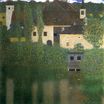 |
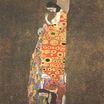 |
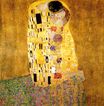 |
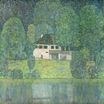 |
 |
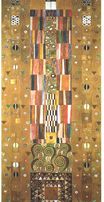 |

Поцелуй 1908
180x180см холст/масло
Österreichische Galerie Belvedere, Vienna, Austria
<< Previous G a l l e r y Next >>
Klimt depicts the couple locked in intimacy, while the rest of the painting dissolves into shimmering, extravagant flat pattern. The patterning suggests the style of Art Nouveau and the organic forms of the Arts and Crafts movement. At the same time the background evokes the conflict between two- and three-dimensionality intrinsic to the work of Degas and other modernists. Paintings such as The Kiss were visual manifestations of fin-de-siecle spirit because they capture a decadence conveyed by opulent and sensuous images. The use of gold leaf recalls medieval "gold-ground" paintings and illuminated manuscripts, and earlier mosaics, and the spiral patterns in the clothes recall Bronze Age art and the decorative tendrils seen in Western art since before classical times. The man's head ends very close to the top of the canvas, a departure from traditional Western canons that reflects the influence of Japanese prints, as does the very simplified composition. The two figures are situated at the edge of a patch of flowery meadow. The man wears a robe with black and white rectangles irregularly placed on gold leaf decorated with spirals. He wears a crown of vines while the woman is shown in a tight-fitting dress with flower-like round or oval motifs on a background of parallel wavy lines. Her hair is sprinkled with flowers and is worn in a fashionable upsweep; it forms a halo-like circle that highlights her face, and is continued under her chin by what seems to be a necklace of flowers. Similarly juxtaposed couples appear in both Klimt’s Beethoven Frieze and Stoclet Frieze.